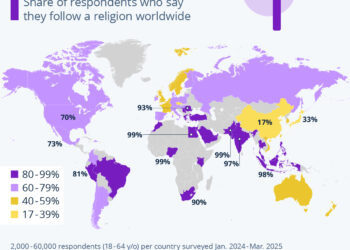Understanding the Evolving Landscape of Abortion Rights in the U.S.
The issue of abortion rights in the United States continues to be a contentious topic, particularly during election cycles. Recent voting in ten states showcased a significant shift towards strengthening abortion rights, reflecting the views of many U.S. citizens who advocate for reproductive autonomy.
Recent Voting Trends on Abortion Rights
On a notable election day, voters across various states took to the polls to decide on constitutional amendments that either protect or expand abortion rights. Preliminary projections indicated that a majority of voters expressed support for enhancing these rights within their respective states, according to NBC News.
States Strengthening Abortion Protections
Several states, including Arizona and Missouri, saw voters approving measures aimed at safeguarding abortion rights up to fetal viability. This type of legislation is crucial, as it seeks to define a clear timeframe for when access to abortion services is protected, providing a legal framework that can withstand future political challenges.
Constitutional Amendments for Abortion Rights
In several states—namely Colorado, Maryland, Montana, and New York—voters made significant moves to enshrine existing abortion rights into their state constitutions. This step is particularly vital because constitutional amendments are generally more challenging to alter or repeal compared to standard legislative measures, providing a stronger legal safeguard for these rights.
Unique Measures and Considerations
New York’s voters demonstrated an intention to address broader reproductive health issues by supporting an amendment aimed at banning discrimination related to pregnancy or reproductive health. This highlights the intersectionality of reproductive rights, where issues of equity and health care access come into play.
States with Failed Reproductive Measures
Not all proposals found favor among voters, however. In Florida, a crucial measure seeking to overturn the current ban on abortions after six weeks failed to gain the necessary 60% support required for approval. This shortfall signifies the ongoing challenges advocates face in states where restrictive abortion legislation prevails.
South Dakota’s Rejection of Proposals
Similarly, South Dakota’s proposition to protect abortion rights within the first trimester was rejected. The proposed legislation sought to extend protections into the second and third trimesters given specific medical circumstances, emphasizing the complexities surrounding the discussions on abortion access.
Nebraska’s Competing Amendments
In Nebraska, the situation remains dynamic, with voters approving measures that impose a ban on abortions after the first trimester, with specific exceptions. The state is concurrently grappling with a competing amendment that aims to affirm the right to abortion before fetal viability. This ongoing negotiation reflects the nuanced and often polarized views held by the populace regarding reproductive rights.
Implications of the Voting Outcomes
The recent voting trends illustrate a significant engagement from U.S. citizens regarding reproductive rights. The outcomes could transform the political landscape concerning abortion legislation in these states, leading to heightened awareness and advocacy efforts on behalf of reproductive health.
The Broader Context of Abortion Rights in America
The ongoing developments in these ten states serve as a microcosm of the national debate surrounding reproductive rights. As state-level legislation interacts with broader societal values and civil rights principles, the fight for comprehensive reproductive health care continues to evolve, revealing the varied perspectives that coexist within the American landscape.






